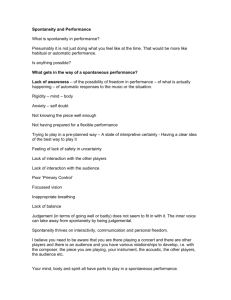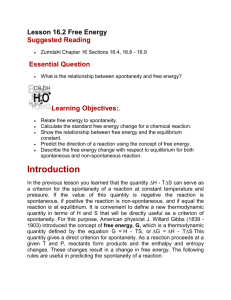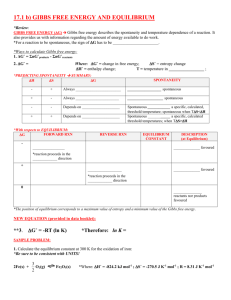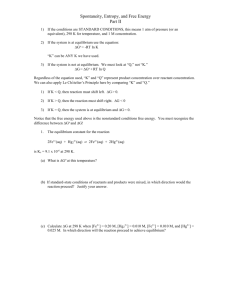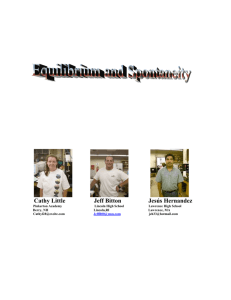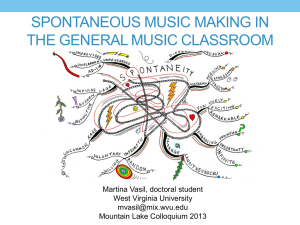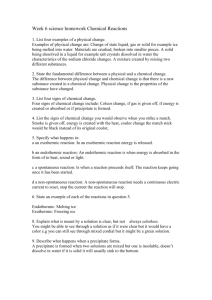Free_Energy_and_Temperature
advertisement
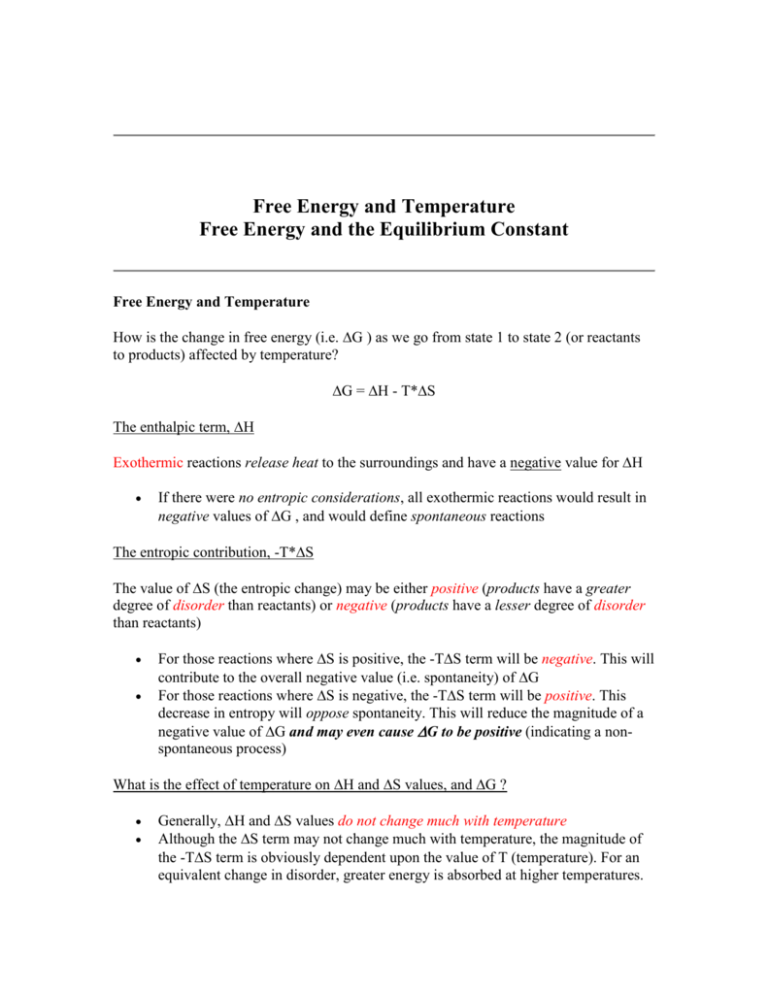
Free Energy and Temperature Free Energy and the Equilibrium Constant Free Energy and Temperature How is the change in free energy (i.e. G ) as we go from state 1 to state 2 (or reactants to products) affected by temperature? G = H - T*S The enthalpic term, H Exothermic reactions release heat to the surroundings and have a negative value for H If there were no entropic considerations, all exothermic reactions would result in negative values of G , and would define spontaneous reactions The entropic contribution, -T*S The value of S (the entropic change) may be either positive (products have a greater degree of disorder than reactants) or negative (products have a lesser degree of disorder than reactants) For those reactions where S is positive, the -TS term will be negative. This will contribute to the overall negative value (i.e. spontaneity) of G For those reactions where S is negative, the -TS term will be positive. This decrease in entropy will oppose spontaneity. This will reduce the magnitude of a negative value of G and may even cause G to be positive (indicating a nonspontaneous process) What is the effect of temperature on H and S values, and G ? Generally, H and S values do not change much with temperature Although the S term may not change much with temperature, the magnitude of the -TS term is obviously dependent upon the value of T (temperature). For an equivalent change in disorder, greater energy is absorbed at higher temperatures. The greater the temperature, the greater the magnitude of the -TS term If S is negative (i.e. unfavorable entropy change), the value of the -TS term is positive, and increasing the temperature will increase the magnitude of the positive value of the TS term At some high temperature, the magnitude of the (positive) -TS term can overwhelm the magnitude of an exothermic (i.e. negative) H term. And even though the reaction is exothermic it will not occur spontaneously (i.e. G = positive in value) The opposite type of situation may occur: a reaction may be endothermic (H is positive), and have a positive value for S With a positive value for S, the -TS term favors spontaneity. However, at low temperatures, its contribution will be small (magnitude of -TS at low temperatures is small). In this case H predominates and the reaction will be nonspontaneous (G = positive) At higher temperatures, the magnitude of the -TS term increases and can overwhelm the (positive) H term. In this case the -TS predominates and the reaction is spontaneous (G = negative at high temp) Summary: H S -TS G - + - - (exothermic) (products more disordered) (favors spontaneity) (spontaneous at all T) - - + - (exothermic) (products less disordered) (opposes spontaneity) (spontaneous) at low T + (non-spontaneous) at high T "Enthalpically-driven process" + + - + (endothermic) (products more disordered) (favors spontaneity) (non-spontaneous) at low T (spontaneous) at high T "Entropically-driven process" + - + + (endothermic) (products less disordered) (opposes spontaneity) (non-spontaneous at all T) Free Energy and the Equilibrium Constant Recall that standard free-energy of formation values from tables can be used to calculate the standard free energy change associated with a reaction: G0 = nGf0(products) - mGf0(reactants) These tabulated Gf0 values are for standard conditions and a defined temperature Often we are interested in the value of G0 for a reaction that is not under standard conditions (e.g. other concentrations than standard conditions of 1 atm for a gas, or 1M for a solution) The general relationship between the free-energy change under standard conditions (i.e. G0) and the free-energy change under any other conditions, (i.e. G), is defined as: G (e.g. under non-standard conditions of conc.) = G0 + RT ln Q R is the gas constant, 8.314 J/mol K T is absolute temperature (K) Q is the calculated reaction quotient Calculate G at 298K for the Haber reaction where you start with 1.0 atm N2(g), 3.0 atm H2(g) and 1.0 atm NH3(g). G0298K = -33.3 kJ N2(g) + 3H2(g) 2NH3(g) Q = 1.02 / (1.0 * 3.03) Q = 3.7 x 10-2 G = G0 + RT ln Q G = -33.3 kJ + 8.314 J/K * 298K * ln (3.7 x 10-2) G = -33.3 kJ - 8.17 kJ = -41.5 kJ Conclusion: the free energy becomes more negative (i.e the reaction is driven more to the right) under the new conditions, compared to standard conditions At standard conditions the pressure of all components is 1 atm. Under the new conditions, the pressure of H2(g) is increased to 3.0 atm. The results follow Le Chatelier's principle: adding more H2(g) drives the reaction to the right Q reflects the ratios of the various components under starting conditions. K reflects their ratios at equilibrium. If the starting system is at equilibrium, then Q = K At equilibrium G = 0 (no spontaneous reaction in either direction) Therefore: G = G0 + RT ln Q at equilibrium becomes G = G0 + RT ln K and 0 = G0 + RT ln K or G0 = -RT ln K If K>1 it means the equilibrium favors the products (i.e. spontaneity to the right). In this case lnK will be positive and therefore G0 will be negative (again spontaneity to the right) If K<1 it means the equilibrium favors the reactants (i.e. spontaneity to the left). In this case lnK will be negative and therefore G0 will be positive If K = 1, lnK will be zero and so will G0. The reaction is at equilibrium
